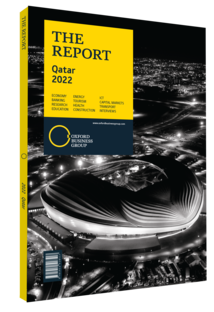GCC emphasis on food security is promising area for investment
Nations in MENA have been intensifying efforts to increase their food security, with Russia’s invasion of Ukraine the most recent geopolitical event to underline the fragility of global supply chains, as well as the importance of boosting domestic agricultural output. Together, Russia and Ukraine account for some 29% of the world’s wheat supply, pointing to the significant risk in terms of both availability and price to major grain-importing countries. Egypt is the world’s largest wheat importer, with nearly 70% of its supply coming from Russia and Ukraine, according to 2019 figures from the Observatory of Economic Complexity. The UAE, for its part, sources around half of its wheat from Russia, while Saudi Arabia is the world’s top importer of barley, which it uses as animal feed, with most of its supplies coming from Russia and Ukraine.
GCC Food Security
At the start of the Covid-19 pandemic countries in the GCC imported around 85% of their food. Almost all rice was imported, as well as some 93% of cereals, 62% of meat and 56% of vegetables. Supply chain disruption triggered by the health crisis therefore had an immediate impact, spurring countries to step up existing programmes to boost food security. One such example is Qatar’s ambitious State Food Security Projects 2019-23 plan, which targets 30% self-sufficiency in red meat, 70% self-sufficiency in eggs and greenhouse-produced vegetables, 95% self-sufficiency in fresh fish, and 100% self-sufficiency in fresh dairy products, poultry and shrimp by 2023.
The pandemic also encouraged actors in the region to increase their emphasis on innovation, which is seen as crucial to boosting productivity and improving water management. Between 2014 and 2020 a total of 33 investment deals in agri-tech start-ups in the wider MENA region attracted some $250m in investment. However, a large portion of this was raised in 2020, in response to the pandemic.
An increasingly prominent agri-tech solution is vertical farming, whereby plants are grown in stacked layers. Qatar invested heavily in greenhouse vegetable production in the years leading up to the pandemic as it worked to boost self-sufficiency and ease reliance on imports, particularly from some of its neighbours who imposed an economic blockade on Qatar from mid-2017 until early 2021.
In contrast to the blockade, the pandemic led to greater regional cooperation on food security. Early on in the crisis, the GCC adopted a Kuwaiti proposal to create a food supply network across the bloc. Triggered by concerns about Covid-19-related disruption to trade, the countries agreed to set up special arrangements at border control and Customs posts in order to facilitate the movement of basic food and medical supplies within the six-member alliance. Going forwards, more streamlined regional trade could help countries share the burden of guaranteeing food security.
Investing in Innovation
In North Africa, as in the GCC, it is widely recognised that the best solution to food security challenges is a shift towards agri-tech, improved water management and green energy. While the short-term environment may be challenging, if initiatives are aligned and expanded going forwards, mid- to long-term prospects are more positive.
Egypt offers several examples in this area. Despite being the region’s agricultural powerhouse, Egypt’s agriculture sector meets less than half of domestic demand for cereal grains and oilseeds, according to the Middle East Institute, a US-based think tank. Alongside various government initiatives, a number of Egyptian start-ups are working to address this shortfall. Wastilizer, for example, breaks down animal waste to produce water, biogas and plant fertiliser. The process enhances the quality of crops, promotes the development of a circular economy and – because animal waste is reused rather than dumped in rivers – improves water quality. This increased focus on stimulating innovation in the MENA agri-tech space should lead to rising investment from both public and private sources in the years ahead.
You have reached the limit of premium articles you can view for free.
Choose from the options below to purchase print or digital editions of our Reports. You can also purchase a website subscription giving you unlimited access to all of our Reports online for 12 months.
If you have already purchased this Report or have a website subscription, please login to continue.

